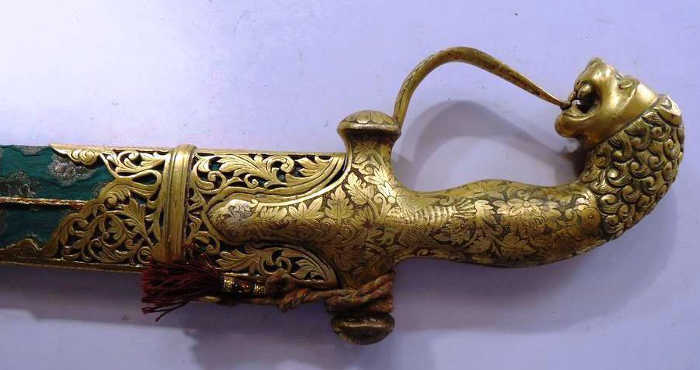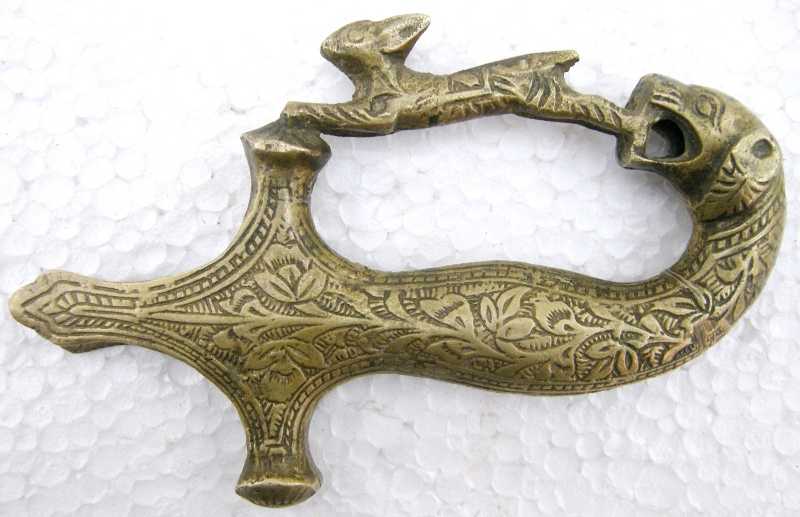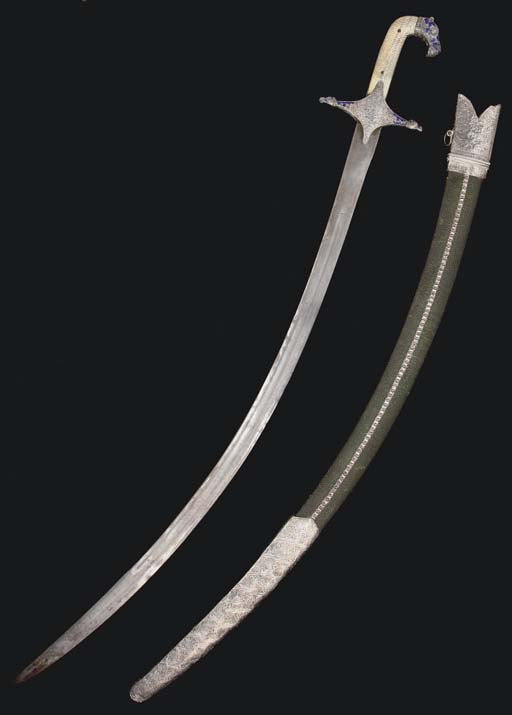FWP:
SETS == EXCLAMATION; MULTIVALENT WORDS ( dam ); REPETITION
SWORD verses: {1,3}; {4,14x}; {12,3x}; {14,3} (with dashnah list); {17,5} (with shamshiir ); {19,4}; {26,3} (with ;xanjar list); {56,5}; {59,6} (with dashnah-o-;xanjar list); {60,4} ( with talvaar ); [{62,7}]; {72,4}; {84,7x}; {88,6x}, showing polish-lines; {91,7} ( chhurii ); {92,3}; {109,7x}; {112,9}; {115,4}; {120,3}*; {120,9}; {132,5}; {137,4x}; {139,9}; {157,1}; {186,5}; {193,2}, with discussion of aab wordplay verses; {200,2}; {209,4}; {209,8}; {217,2}, zahr-aab ; {219,7}; {221,2}; {226,2}; {227,3}; {230,8}; {233,13} // {249x,5}; {264x,6}; {282x,2}; {282x,7}; {286x,4}; {287x,2}; {297x,5}; {342x,2}; {345x,1}; {370x,6}; {374x,1}; {376x,4}; {380x,2}, eyebrow as scimitar; {384x,4}; {396x,7}; {402x,2}; {403x,1}; {414x,7}; {417x,2}; {418x,1}; {418x,4}; {418x,6}; {421x,3}; {421x,5}; {431x,4}
A SPECIAL DISCUSSION: HOW MUCH dam IS ENOUGH? The real delight of the verse is the lovely wordplay
on dam , in which two of its meanings-- the edge of
a sword, and the breath-- are dead-on perfect. Other verses in which multiple meanings of dam are exploited include: {22,7}; {92,3}, which also features a dam-e shamshiir ; and {98,3}. The present verse can also be used as a kind of focal point for a discussion of poetic principle. The question is, how much wordplay, and/or philology, is too much? For dam , from Arabic, also means 'blood'; and dam has other Persian- and Hindi-based meanings as well, of 'trickery' and 'arrogance' (see the definitions above). Do those meanings count too? Here are some thoughts on this problem: *FWP*.
The sword's eagerness could be an illusion created by the lover's passion. Or the uncontrolled enthusiasm could be that of the sword itself, which has come to share the lover's passion. Is that why the word shamshiir has been so conspicuously repeated, to alert us to the fact that plays it two roles? It is both a weapon and a manifestation of 'ardor'; and of course, we can't tell whether the ardor is its own, or the lover's, or even the beloved's-- as Faruqi has suggested (July 2000). Since the first line promises a spectacle, the emotion might even be that of some eager would-be gawker. And no matter who feels the emotion, the word ja;zbah itself carries strong overtones of its root, ja;zb , with its strongly relevant sense of 'drawing, attraction' (see the definition above).
Another verse in which inanimate things seem to quiver with eagerness: {120,6}.
Note for grammar fans: dekhaa chaahiye is an archaic form of what would nowadays be dekhnaa chaahiye . For other such instances see {94,1}; {126,11}; {127,2}; and many verses of {189}, in which it's often worked into the rhyming elements.
Compare Mir's brilliant use of the sword's wild emotions: M{144,5}.
It was common for the hilt of a sword or dagger to be given the form of a dangerous animal's head (here, a lion):

Here's a sword-hilt with *an elephant's head*, here's one with *a snake's head* (but then, here's *a horse's head* and *a peacock's head*). Here's one that depicts both predator and prey:

A more systematic look at another shamshiir :

"A Lucknow enamelled shamshir, India, early 19th century. With single-edged watered steel blade inscribed near hilt, silver fittings engraved with floral decoration, remains of green and blue enamelling to the quillons and lion head terminal, the hilt of ivory with cross-hatching and scabbard of shagreen - 36 1/4in. (92cm.) long."
Nazm:
The word dam has two meanings, 'breath' and 'edge', and here both meanings are related and suitable. He has said 'breast of the sword'-- the meaning is that in my eagerness to be slain, such passion is attracting the sword's dam that it is drawn out of the sword's breast. (2)
== Nazm page 2